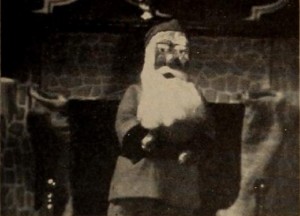
"Taking the familiar 'Twas the Night Before Christmas as a theme, Bert Seckendorf and Vic Watson have put together an appealing children's holiday film combining live action with animation. The live action interludes show a father reading the poem to his young son on Christmas Eve, with the familiar lines superimposed at the base of the scene. These connectives then fade out to miniature sets in which animated figures re-enact the well known story of St. Nick. The film suffers from some underexposure and uneven animation in places, but it offers a very pleasant holiday item." Movie Makers, Dec. 1949, 455,468.
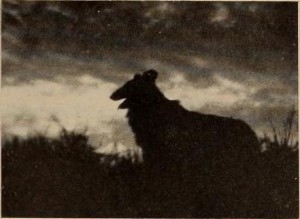
"Raymond Berger has based his film on the familiar story of a dog that finds his way back home from a long distance, paralleled with a little girl's grief at the dog's absence. Imprisoned accidentally in the luggage compartment of a parked car, Lassie, a magnificent Collie, is driven miles from home before his equally accidental release. As the dog turns homeward, Mr. Berger maintains the suspense of his adventures over difficult terrain with admirable skill. A little closer cutting in the final re- union scenes at home would have heightened the dramatic quality. The few long shots in this 8mm. film are outstandingly executed, and there are touching closeups of the little girl as she mourns her pet." Movie Makers, Dec. 1949, 468.
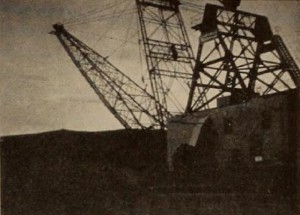
"Alan Probert's Alaskan Gold is an extremely competent, step by step analysis of the placer mining of gold, from the early days of the Gold Rush to today's massive and highly integrated industrial systems. Mr. Probert shows an enormous amount of technical detail, but his explanations help the layman avoid most of the boredom frequently encountered in such treatments." Movie Makers, Dec. 1949, 468.
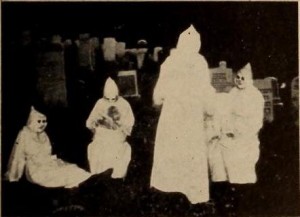
"When darkness envelops the land and all sensible folk are safe in their beds, it is then, 'tis said, that the disembodied creatures disport themselves in and around the lonely cemeteries. A grave subject for a filmer, but Earl H. Sparks has created from it as zany a witches' comedy as the Walpurgis Night of unholy legend — or the madcap merriment of the Marx Brothers. Resourceful and adept technical handling, plus a lively if perverse imagination, imbue this phantom farce with high good humor and, shall we say, a haunting charm?" Movie Makers, Dec. 1949, 468.
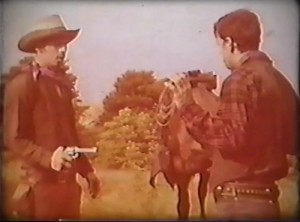
"Handsome and hard hitting, Bold Badmen is a Western filmed as Westerns should be filmed — without romance, without singing, but with plenty of shooting, plenty of horsemanship and plenty of very tough looking and acting characters. Casimer V. Zaleski knows that movement makes a movie. Bold Badmen is crammed with both kinds — physical and cinematic. Unfortunately, the physical condition of the film (which was inexcusably scratched and dirty) did much to restrain the enthusiasm of the judges for a melodrama of real power." Movie Makers, Dec. 1949, 468-469.

"The Nordic sons who fish the icy waters of Lake Superior are the heroes of this story of Minnesota's northland. William C. Kuhl, in recording their struggles against nature for their daily livelihood, focuses attention on a single incident of one day's catch. The suspense element is effectively built up, the climax followed by quietly declining action to the end title. The camera technique is uniformly excellent. A less personal viewpoint in the narrative and a stronger musical scoring would have improved the overall quality of the presentation." Movie Makers, Dec. 1949, 469.
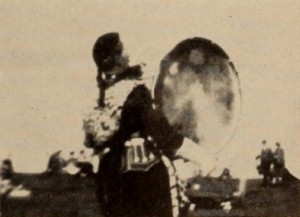
"Esther Cooke showed intelligence and imagination in organizing the material of this travel study of Scotland, so that even the least observant should get from it a truly representative feeling of that doughty land. Well written titles serve as titles should, to infuse in the film pertinent data not shown in the scenes; technically, a less fussy style of title lettering would have been an improvement. Mrs. Cooke's slight camera unsteadiness in scenes of the King and Queen of England at the Scottish festival was understandable, for undoubtedly tripods were barred from that event. There were, however, a few other uneven shots that seemed to us questionable in value. Restrained use of bagpipe recordings highlight a generally effective musical score." Movie Makers, Dec. 1949, 469.
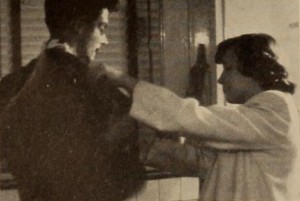
"The trials, tribulations and eventual triumphs of a teen aged young man embarked on his initial evening engagement are engagingly portrayed by John C. Sherard in First Date. Even the traditional nuisance role played by junior members of the girl's family is given a new angle — a trained flea circus on the loose. But this bit of business and others in a basically imaginative comedy are, on occasion, drawn out too much for the best dramatic pace. Outstanding in the film, however, is Mr. Sherard's use of Type A Kodachrome outdoors without the corrective filter to simulate moonlight." Movie Makers, Dec. 1949, 469.

"Gannets are treated exhaustively and other aspects of life on Gaspe lightly in W. A. Levett's Gaspesia, a sound and often informative study of this tiny Canadian community. Mr. Levett has his Kodachrome under crisp control, and the strong textures in many of his sequences lend authenticity to a generally able film. The life of the gannets is admirably handled, though the time devoted to them tends to give the film a split personality." Movie Makers, Dec. 1949, 469.
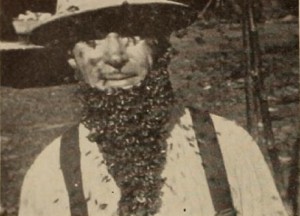
"Out of his personal experience, C. H. Bacon has produced an intimately documented film study of honey bees, both from the viewpoint of the keeper and that of the bees. Included are some extraordinary detail shots of life within the hive — the birth, life and death of a queen bee, construction of a hive, protection against natural enemies and the production of honey. Happy touches of light humor balance the more serious aspects of the subject, while the bear sequence at the end provides an amusing climax. Exceptionally well lighted and capably photographed, the picture provides entertaining and instructive screen fare." Movie Makers, Dec. 1949, 469-470.
Total Pages: 299